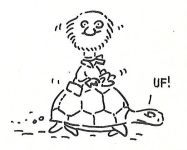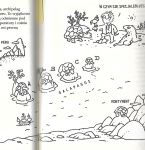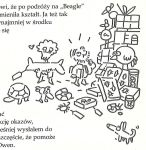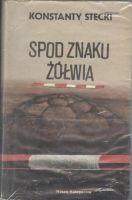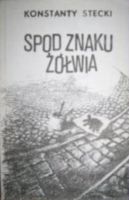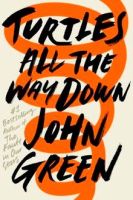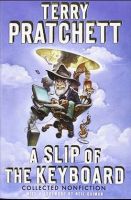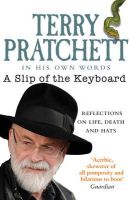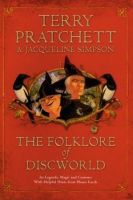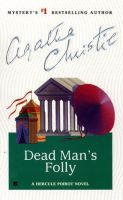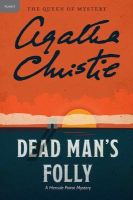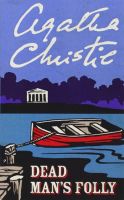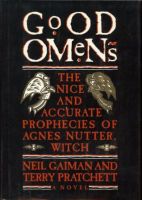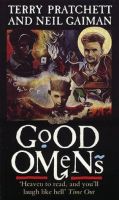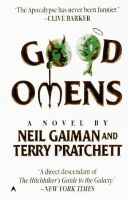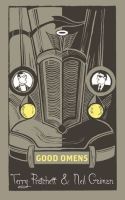 Title: Turtle Recall
Title: Turtle Recall
Author(s): Terry Pratchett, Stephen Briggs
Release year: 2012
Publisher: Gollancz
Why in Database: “Turtle recall” is an encyclopaedic position, most of the book are notes describing various aspects of the Discworld, characters, places, organizations, and so on. In addition, at the very beginning we have an introduction from Stephen Briggs (twithout any turtle elements), most of the content is an encyclopedic part (at least 24 mentions in the text (maybe there is more) and 2 graphic ones, one with the entry in which turtles are also mentioned, and one only in form of graphic) , at the end there is also an archival interview with Pratchett (with one turtle mention), in explaination of the rules of the game “mutilate Mr. Onion” (which also includes one turtle mention).
First fragment, in the introduction:
Several years ago now, I recorded a couple of lines to go into Dave Greenslade’s From the Discworld album . . . this was another happy accident, as I’d only gone along to the studio to dress up as Death for some publicity pix. From those two lines (‘The turtle moves’ and ‘Nevertheless, the turtle does move’), I have now moved on to recording some of the unabridged books for Isis Publishing.
In the entry Astrolabe
Astrolabe. One of the Disc’s finest astrolabes is kept in a large, star-filled room in KRULL. It includes the entire Great A’Tuin-Elephant-Disc system wrought in brass and picked out with tiny jewels.
Around it the stars and planets wheel on fine silver wires. On the walls the constellations have been made of tiny phosphorescent seed pearls set out on vast tapestries of jet-black velvet. These were, of course, the constellations current at the time of the room’s decoration – several would be unrecognisable now owing to the Turtle’s movement through space. The planets are minor bodies of rock picked up and sometimes discarded by the system as it moves through space, and seem to have no other role in Discworld astronomy or astrology than to be considered a bloody nuisance.
In the entry Astrozoologists
Astrozoologists. Krullian scientists interested in studying the nature of the Great A’TUIN. Specifically, its sex.
In the entry A’Tuin, the Great
A’Tuin, the Great. The star turtle who carries the Discworld on its back. Ten-thousand-mile-long
member of the species Chelys galactica, and the only turtle ever to feature on the Hertzsprung-
Russell Diagram. Almost as big as the Disc it carries. Sex unknown.
Shell-frosted with frozen methane, pitted with meteor craters and scoured with asteroidal dust, its
eyes are like ancient seas, crusted with rheum. Its brain is the size of a continent, through which
thoughts move like glittering glaciers.
It is as large as worlds. As patient as a brick. Great A’Tuin is the only creature in the entire universe
that knows exactly where it is going.
Upon its back stand Berilia, Tubul, Great T’Phon and Jerakeen, the four giant elephants upon whose
shoulders the disc of the world rests. A tiny sun and moon spin around them on a complicated orbit to
induce seasons, although probably nowhere else in the multiverse is it sometimes necessary for an
elephant to cock its leg to allow the sun to go past.
After the events of The Light Fantastic, the Great A’Tuin was orbited by eight baby turtles, each with
four small world-elephant calves and tiny discworlds, covered in smoke and volcanoes. They have
subsequently begun their own cosmic journeys.
Wizards have tried to tune into Great A’Tuin’s mind. They trained up on tortoises and giant sea turtles
to get the hang of the Chelonian mind. But although they knew that the Great A’Tuin’s mind would be
big, they rather foolishly hadn’t realised it would be slow. After thirty years all they found out was
that the Great A’Tuin was looking forward to something.
People have asked: How does the Disc move on the shoulders of the elephants? What does the Turtle
eat? One may as well ask: What kind of smell has yellow got? It is how things are.
In the entry Brutha
(…) When the Great God OM was trapped in the form of a tortoise, Brutha – whose quiet and unquestioning belief meant he was the only person left in the entire country who could hear the god speak – carried him round in a wickerwork box slung over his shoulder. After many adventures, both prospered in their chosen spheres.
In the entry Caroc cards
Caroc cards. Distilled wisdom of the Ancients. Deck of cards used on the Discworld for fortune telling and for card games (see CRIPPLE MR ONION). Cards named in the Discworld canon include The Star, The Importance of Washing the Hands (Temperance), The Moon, The Dome of the Sky, The Pool of Night (the Moon), Death, the Eight of Octograms, the Four of Elephants, the Ace of Turtles.
In the entry Granny’s Cottage
On the bed itself is a patchwork quilt which looks like a flat tortoise. It was made by Gordo SMITH and was given to Miss Weatherwax by ESK’S mother one HOGSWATCHNIGHT.
In the entry Chimera
Chimera. A desert creature, with the legs of a mermaid, the hair of a tortoise, the teeth of a fowl, the wings of a snake, the breath of a furnace and the temperament of a rubber balloon in a hurricane. Clearly a magical remnant. It is not known whether chimera breed and, if so, with what.
In the entry Chelonauts
Chelonauts. Men who journey – or at least intend to journey – below the Rim to explore the mysteries of the Great A’TUIN. Their suits are of fine white leather, hung about with straps and brass nozzles and other unfamiliar and suspicious contrivances. The leggings end in high, thick-soled boots, and the arms are shoved into big supple gauntlets. Topping it all is a big copper helmet designed to fit on the heavy collars around the neck of the suits. The helmet has a crest of white feathers on top and a little glass window in front.
In the entry Discworld, the.
(…) And there, below the mines and sea-ooze and fake fossil bones put there (most people believe) by a
Creator with nothing better to do than upset archaeologists and give them silly ideas, is Great A’TUIN.
(…)
The Discworld should not exist. Flatness is not a natural state for a planet. Turtles should grow only
so big. (…)
In the entry Death, House of
(…) In one corner and dominating the room, however, is a large disc of the world. This magnificent feature is complete down to solid silver elephants standing on the back of a Great A’TUIN cast in bronze and more than a metre long. The rivers are picked out in veins of jade, the deserts are powdered diamonds and the most notable cities are picked out in precious stones.(…)
In the entry Gamblers’ Guild
 Gamblers’ Guild. Motto: EXCRETVS EX FORTVNA. (Loosely speaking: ‘Really Out of Luck’.) Coat of
Gamblers’ Guild. Motto: EXCRETVS EX FORTVNA. (Loosely speaking: ‘Really Out of Luck’.) Coat of
arms: A shield, gyronny. On its panels, turnwise from upper sinister: a sabre or on a field sable; an
octagon gules et argent on a field azure; a tortue vert on a field sable; an ‘A’ couronnée on a field
argent; a sceptre d’or on a field sable, a calice or on a field azure; a piece argent on a field gules; an
elephant gris on a field argent. (…)
In the entry Calendars
Calendars:
THE DISCWORLD YEAR:
The calendar on a planet which is flat and revolves on the back of four giants elephants is always
difficult to establish.
It can be derived, though, by starting with the fact that the spin year – defined by the time taken for a
point on the Rim to turn one full circle – is about 800 days long. The tiny sun orbits in a fairly flat
ellipse, being rather closer to the surface of the disc at the rim than at the Hub (thus making the Hub
rather cooler than the rim). This ellipse is stable and stationary with respect to the Turtle – the sun
passes between two of the elephants.
In the entry Rimbow
(…) The Rimbow hangs in the mists just beyond the edge of the world, appearing only at morning and evening when the light of the Disc’s little orbiting sun shines past the massive bulk of the Great A’TUIN and strikes the Disc’s magical field at exactly the right angle.
In the entry Krull
(…) The Krullians once had plans to lower a vessel over the Edge to ascertain the sex of the Great A’TUIN.
In the entry Morecombe
Morecombe. A vampire, although obviously housetrained. He is the solicitor of the RAMKIN family, and senior member of the firm Morecombe, Slant and Honeyplace. Scrawny around the neck, like a tortoise; very pale, with pearly, dead eyes.
In the entry Oats, Quite Reverend
(…) He also wore a holy turtle pendant and carried a finely printed graduation copy of the Book of Om, which he unfortunately mislaid during the events of Carpe Jugulum. (…)
In the entry Om
Om. The Great God Om. When he is first encountered, he is a small tortoise with one beady eye and
a badly chipped shell. (…)
In the entry Simony, Sergeant
Simony, Sergeant. Sergeant in the Divine Legion in OMNIA and a follower of the Turtle Movement.(…)
In the entry Potent Voyager
Potent Voyager. Vessel constructed by DACTYLOS to take two chelonauts out over the Rim to determine the sex of the Great A’TUIN. A huge bronze space ship, without any motive power other than the ability to drop.
In the entry Zodiac
It would be more correct to say that there are always sixty-four signs in the Discworld zodiac but also that these are subject to change without notice. Stars immediately ahead of the Turtle’s line of flight change their position only very gradually, as do the ones aft. The ones at right angles, however, may easily alter their relative positions in the lifetime of the average person, so there is a constant need for an updating of the Zodiac. This is done for the STO PLAINS by Unseen University, but communications with distant continents (who in any case have their own interpretations of the apparent shapes in the sky) are so slow that by the time any constellation is known Discwide it has already gone past.
In the entry Turtle, the Great
Turtle, the Great. (See A’TUIN, GREAT.)
In the entry Turtle Movement
Turtle Movement. A secret society in OMNIA which believes that the Disc is flat and is carried
through space on the backs of four elephants and a giant turtle. Their secret recognition saying is ‘The
Turtle Moves’. Their secret sign is a left-hand fist with the right hand, palm extended, brought down
on it. Most of the senior officials of the Omnian church are members of the ‘movement’, but since they
all wear hoods and are sworn to absolute secrecy each thinks he is the only one.
In the header of the final part of the book:
TURTLES ALL THE WAY DOWN: EVEN MORE DISCWORLD STUFF!
In the interview:
I know you get asked this all the time, but we still have to ask it here . . . In your own words, where did Discworld come from?
I used to say that the basic myth that the world is flat and goes through space on the back of a turtle is found on all continents – some school kids recently sent me a version of it I hadn’t run across before. And once you get into Indo-European mythology you get the elephants, too. But I’ve got asked so many times, and no one listens anyway, so now I just say I made it up.
In the rules for “Cripple Mr Onion”:
Great A’Tuin’s Rule : Declaring the World card allows a player to reduce the value of one of the player’s cards by eight points and to increase the value of a different card by eight points. The two affected cards must still have value between one and eleven inclusive. A two that is shifted up to value ten may be considered a picture card; a three shifted up to eleven as an ace of value eleven.
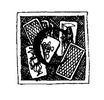

Author: XYuriTT
 Title: Darwin and the True Story of the Dinosaurs
Title: Darwin and the True Story of the Dinosaurs